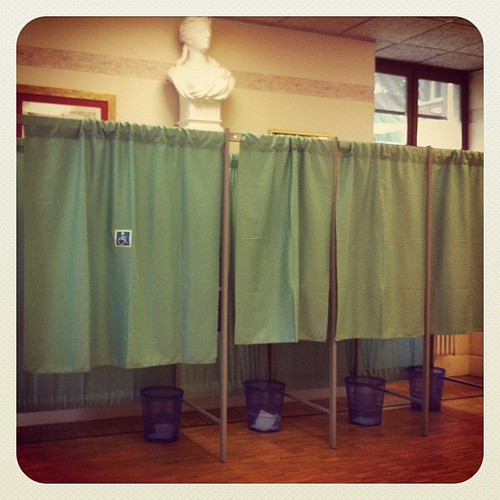


The issue of voter suppression is having its moment in the national spotlight, thanks to the newly proposed Voter ID legislation in several states considered key to winning the 2012 presidential election.
This POLITICO.com op-ed by historian Charles Postel revisits our country’s history of voter suppression in the name of partisan politics. Garry Trudeau even brought his Jimmy Crow character back to Doonesbury for a week’s-worth of cartoon strip satirization of what he told McClatchy News blogger, William Douglas, was “a toxic solution to remedy a nonexistent problem.”
Meanwhile, lawmakers like Pennsylvania Secretary of the Commonwealth, Carol Aichele, are adamant that the new laws are not discriminatory. “Our voter ID law is to prevent fraud, not voting,” she wrote at the close of a USA TODAY guest editorial last week.
But voter suppression is all too real for people with disabilities; though the obstacles are far more tangible than the pieces of paper and electronic databases being hotly debated. A new study published in the academic journal, Social Science Quarterly, says as many as 3.2 million Americans with disabilities still do not have accessible voting available in the local precincts where they are registered.
USA TODAY reporter Gregory Koris speaks to the study’s co-author, Lisa Schur, for his August 10 article, “Study shows voters with disabilities face access barriers.” Schur says that closing the 11% margin in turnout between voters with disabilities and those without could have a significant impact on election-night results.
Koris also writes of a recent U.S. District Court ruling that ordered New York City’s Board of Elections to make its precincts more accessible. His article includes an example of one precinct in Brooklyn and the viewpoint of one of its registered voters, Denise McQuade, a 64-year-old woman who uses a wheelchair:
[McQuade] described the ramp at her polling place as a ‘ski slope.’ She now votes absentee, which she calls a ‘second-class ballot’ that forces her to cast votes before she has made up her mind.
American Association of People with Disabilities president and CEO Mark Perriello has said voter turnout is one of his organization’s main objectives in 2012. As we’ve noted in previous posts, inaccessibility of voting areas is a nationwide problem. Koris cites a Government Accountability Office report at the close of his article that says only 27% of polling places presented no obstacles to people with disabilities in 2008. If lawmakers sincerely want to improve voter turnout, ensuring these American citizens are able to carry their legal right at the ballot box is a good place to start.
Comments?
Image by Frédérique Voisin-Demery, used under its Creative Commons license.